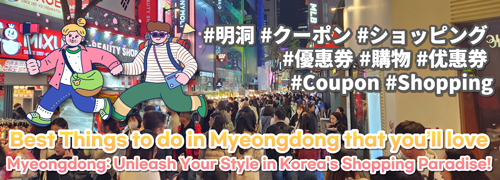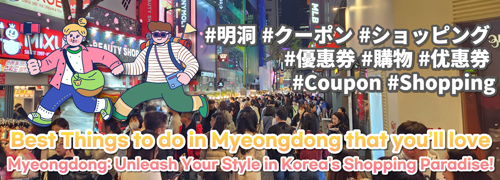Gwangju Weather Forecast (3 hour unit)
Today
07/04
28.3oC
broken clouds
3.2m/s 76% 71%
07/04 12
30.8oC
broken clouds
70%
79%
07/04 15
30.7oC
overcast clouds
66%
88%
07/04 18
28.5oC
overcast clouds
76%
100%
07/04 21
26.1oC
overcast clouds
94%
100%
07/05 00
23.5oC
overcast clouds
96%
87%
07/05 03
23.9oC
broken clouds
96%
78%
07/05 06
24.7oC
overcast clouds
91% 97%
07/05 09
27.6oC
overcast clouds
75% 100%
07/05 12
31.9oC
broken clouds
56% 72%
07/05 15
32.2oC
overcast clouds
54% 87%
07/05 18
29.2oC
broken clouds
68% 70%
07/05 21
24.4oC
overcast clouds
94% 86%
07/06 00
23.5oC
scattered clouds
98% 41%
07/06 03
23.5oC
broken clouds
99% 58%
popular in Gwangju
informations on traveling
99Articles
Review
10,277Reviews
Famous spot for Gwangju
Gwangju(Dong-gu)
,
Mudeungsan Nationtl Park (무등산국립공원) is a mountain at the edge of Hwasun-gun, Damyang-gun and Gwangju. Mt. Mudeungsan (1,186m) features three rock peaks called Cheonwangbong, Jiwangbong, and Inwangbong, also known as the “Jeongsang Three."Mudeungsan’s gradual slope makes it an easy climb for all. Locals once worshiped Cheonwangbong Peak as it was considered a mountain of God. Among the more majestic of these sites are the Seoseokdae, Gyubong, and Ipseokdae peaks. At the base of the mountain are several famous temples including Yaksaam, Jeungsimsa, and Wonhyosa. Mt. Mudeungsan is also known for its beauty throughout the year. The fall autumn leaves of Gyubongam and Eoksae grass of Baekma ridge is quite spectacular. In the winter, snow and ice on the mountains create exquisite scenery as well.Below the mountain, there is a variety of recreational facilities and tourists sites for visitors. This includes the Gwangju National Museum, a traditional Korean style building with exhibition space and artifacts on display. These items total 2,000 artifacts and include treasures excavated from the sea of Sinan, items from Honam province (made during the Seonsa, Baekje, and Silla periods), and paintings from the Joseon Period.
Gwangju(Buk-gu)
,
Gwangju, the primate city of Kimchi is to host the festival to boost the sales of one of its famous locally produced specialties - Kimchi. Farmers collaborate with the festival organizers to ensure that fresh fruits and vegetables are supplied for the festival's use. At the festival, visitors may sample a wide range of kimchi varieties, and learn how to make some as well.The one and only Kimchi Presidential prize for the ‘ Kimchi Master Competition’ will be held along with exhibitions, markets, educational and hands-on programs .
Gwangju(Dong-gu)
,
Gwangju Art Street is aimed at developing Gwangju’s traditional art scene through exhibition of local work. The street is 300m long and located behind Jungang Elementary School, nearby Gwangju Dongbu Police Station. Items commonly found here include Korean fine art such as paintings, ceramics, writings, and industrial art.Every Saturday, an art flea market famous for its unique pieces is held here. People from all over the nation gather to display items that include old calligraphy materials, collector coins, stone hairbrushes, Chinaware, wooden sculptures, folk drawings, classic books, ink, and incense burners. Part of the attraction is the stories the collectors share with each part of their collection. Enjoy the many shows and exhibitions that draw regular crowds to this famous road.The Mudeung art exhibit operates according to districts, and functions as a cultural festival as well. The outdoor exhibition was built in February 1995, and is open throughout the day. The large exhibition space has 32 booths and regularly holds special exhibits. Many regional cultural treasures are also on display here. Every Saturday, the Street of Fine Arts is blocked from traffic, and people gather to share and enjoy art culture. Gwangju Summer Universiade will be held this summer, 2015
Gwangju(Buk-gu)
,
The May 18th National Cemetery, located in front of Mt. Mudeungsan, is the symbol of freedom and democracy and is the grave of victims during the contention for democracy in May 1980. Victims were carried and buried by handcarts and garbage trucks in 1980. In 1997 the cemetery was exhumed and reburied at this memorial. May 18th became a national holiday of commemorating our desire for democracy.To enter The May 18th National Cemetery, pass the Democracy Gate, built in a traditional Korean style. Passing the widely spread Plaza of Democracy, you will reach the Commemoration Passage. Keep walking and you will reach a round figure (4m high) of an enclosing hand. This is the Memorial Tower, which symbolizes the resurrection of new life. Under the tower there is a worship platform with burning incense to show respect. Through the Memorial Tower you will find carvings on both sides. On the right there is an enshrinement where pictures and monetary tablets are placed, and across from it stands the Door of History showing the images in those days. You can understand Korean history by viewing these works.After viewing this part of Korean history, it will be pleasant to take a walk and enjoy the surroundings of The May 18th National Cemetery.
Gwangju(Seo-gu)
,
Kimdaejung Convention Center is a state-of-the-art facility in Gwangju, a city with rich cultural heritage and tourism resources. It was built as part of the efforts to promote Gwangju’s competitiveness as a main trade city in northeast Asia to boost local economy and, particularly, tourism resources. The center has served as a main venue for international meetings and exchanges (concerning products, information, culture, and technologies), significantly improving Gwangju’s image. Outstanding services, professional staff, and diverse amenities will make any meeting at Kimdaejung Convention Center pleasant and successful.
Gwangju(Buk-gu)
,
Gwangju National Museum collects and preserves cultural relics from Jeollanam-do. The exhibits are grouped in seven categories according to period and type. The Prehistoric Hall displays stone age tools from the Paleolithic Era, Neolithic Era, and Bronze Ages, as well as other relics from the early Iron Age. Samguk Hall displays many earthenware and ironware items from the Great Onggwan in the Jeolla-do area.The Buddhist Art Hall exhibits cultural Items related to the religion, the Painting Hall exhibits works of artists of the Honam district from the Joseon and modern periods. Jeolla-do is also considered the birthplace of Korean Pottery. The Goryeo Pottery Exhibit Hall showcases the transition from the Cheongja of the Goryeo Period to the Joseon Period's Buncheongsagi and Baekja. It is possible to witness the entire pottery-making process at once. Pottery items are also on display at Joseon Buncheongsagi Baekja Hall.The Shinan Ocean Floor Relic Hall is a unique exhibit hall with items on display from a trade ship submerged for 600 years in the Shinan Sea. The items were excavated during 11 operations that took place from 1976 to 1984. Admission is free on the first Sunday of every month, and the museum is closed on Mondays.
Gwangju(Dong-gu)
,
Named after the posthumous title of General Kim Deok-ryeong, Chungjang-ro Street was the site of the 1980 Gwangju Democratization Movement. Today, it is Gwangju’s major fashion district, comparable with Myeongdong Street of Seoul. The streets of Chungjang-ro are lined with shopping malls, clothing stores, restaurants, cafes, movie theaters and various other attractions, providing the ultimate experience of modern culture in Gwangju. It is the city's hub of fashion, both trendy and traditional, as well as venue for diverse performances.
Gwangju(Buk-gu)
,
Located in Gwangju Metropolitan City, the Namdo Folk Food Museum was established to preserve and promote the folk foods of the Namdo region. The museum is housed in a building that resembles both the long, rectangular presses used to make patterned rice cakes and the Ipseokdae Rock of Mudeungsan Mountain, a symbol of Gwangju. Even the colors of the building’s walls hold special significance. The obangsaek ‘five colors’ (blue, white, red, black, and yellow) symbolize the cardinal directions, the seasons, the major organs in the body, different tastes, feelings, and philosophy.Major facilities at the museum include: a special exhibition room for invitational displays on culture and art, the permanent exhibition room on Namdo folk food, the Museum Studio with material related to the museum itself, and the Museum Shop, which sells a selection of Namdo folk food. Other facilities include the Honam Cultural Material Exhibition Room, which showcases the culture of the Honam region (literature, customs, and art), and a seminar room for art and culture-related lectures and conferences.
Gwangju(Gwangsan-gu)
,
Songjeong is famous for its tteokgalbi (grilled short rib meat patties), which is one of the five best food items of Gwangju. There are many tteokgalbi restaurants around Gwangsan district office, but Songjeong’s history goes back to 1976 and it is still the original.A good tteokgalbi is made by mixing the meat of beef short ribs and pork bone ribs in a one-to-one ratio and adding acacia honey to make the meat both tender and chewy. The dish is also reasonably priced. The secret to the delicious meat is the sauce, which is made with about 20 natural ingredients like kelp, radish, and green onion and no artificial seasonings. Also a pride of the restaurant is the broth made from pork bones which comes with the tteokgalbi.
Gwangju(Nam-gu)
,
Designated the ‘No. 1 Gwangju Metropolitan City Folk Material’ on March 20, 1989, the House of Lee Jang-woo is an upper-class, tile-roofed house with a gate, storeroom, servants’ quarters, detached building, and main building. Estimated to have been constructed in 1899, the house was originally owned by Jeong Byeong-ho, but has been primarily known as the House of Lee Jang-woo, the house’s current owner, since 1965.The L-shaped main hall of the historic building is rather large and consists of (left to right) a wooden verandah, a small room, a hall, the main room, a kitchen, and another small room. Doors that lead to ondol rooms (those heated by traditional Korean floor heating) are double doors with a sliding door on the inside and a hinged door on the outside. The hall has partitions that can be hung up as necessary. Overall, the house is a sturdy example of Korean architecture and remains well-preserved in its original state.









